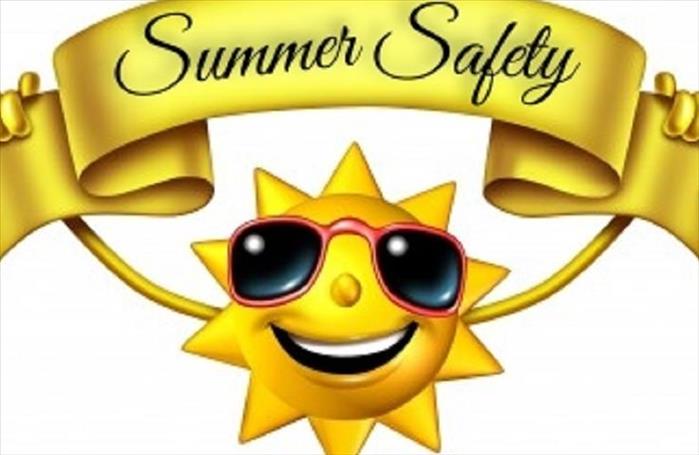Summer Safety Tips for Kids
5/24/2016 (Permalink)
The final school bell has rung, the pencils and notebooks are packed away and the kids are ready for some summer fun! Children love the hot summer months, because they provide the perfect opportunity to spend lots of time outside. Whether it’s swimming in the pool, hiking through the woods, taking long walks, or going for a bike ride, there is something for everyone, no matter how young or old.
We hope that everyone enjoys this special time of year, but we want to also remind parents that there are potential dangers during the summer months, and it’s important to be aware of what they are. The more information one learns about how to prevent illnesses and injuries, the less likely they will occur.
There are many areas to cover when it comes to summer safety, and we’ll review just a few here. Please keep in mind that this is a brief list of tips. For more information check out the web sites recommended at the end of this article.
Tick Bites
Ticks are responsible for a variety of illnesses including Lyme disease and Rocky Mountain Spotted Fever. These diseases can be very serious. Learn ways to protect your family. Some suggestions include:
- protective clothing (long sleeves, long pants, tucking pants into socks)
- tick/bug repellant
- insect repellant for pets
- staying in the center of paths, keeping away from overgrown areas and not sitting directly on the ground
- performing tick checks on all family members every day
- being aware of signs/symptoms of tick-related illnesses
- calling the doctor for any concerns and questions
Helmet Safety
- An appropriate helmet must be worn whenever a child is “on wheels.” This means bicycles, scooters, skates, rollerblades, skateboards and more!
- The helmet must fit properly.
- Helmets can be life saving and can protect a child from serious injury.
- Be sure the right type of helmet is being used. For example, a bike helmet needs to be used for biking.
- Moms and dads should wear helmets as well.
Pedestrian Safety
- Teach children to walk, not run, across the street.
- Children should cross only with an adult or an older, responsible child.
- Whenever crossing the street, try to make eye contact with any drivers nearby, to be sure they see you.
- Teach children to avoid running out from between parked cars.
- Use sidewalks whenever possible.
- Always hold your child’s hand near any moving or parked vehicles.
- Adults always need to set a good example!
Water Safety
- Adult supervision is of paramount importance. Parents need to focus on their children 100% of the time. No distractions!
- Practice “touch supervision” (a term used by the American Academy of Pediatrics). This means that at all times, the supervising adult is within an arm’s length of the child being watched, when near or in the water.
- Remember, no child or adult is “drown proof.”
- Keep in mind that children can drown in many different water sources including: bathtubs, toilets, buckets, baby pools, backyard swimming pools, community pools, streams, creeks, lakes, rivers, oceans and other places.
Sun Protection
- Avoid sun exposure during peak sun hours (10 AM – 6 PM).
- Wear protective clothing and a wide brimmed hat and sunglasses (with 99-100% UV protection).
- Sunscreen is a must (on sunny and cloudy days)! Look for products with UVA and UVB protection and an SPF of at least 15 (according to the American Academy of Pediatrics and American Association of Dermatology).
- Sunscreen should be applied liberally 30 minutes before going out in the sun, and reapplied every two hours or sooner if swimming, sweating or toweling off.
- Look for shade whenever possible.
Poison Ivy, Oak and Sumac
- It’s the oil from the leaves of these plants that cause the potential allergic reaction.
- Consider wearing protective clothing to help decrease the amount of exposed skin.
- Learn how to recognize what poison ivy, oak and sumac look like, so that they can be avoided.
- Avoid bushy, overgrown areas and places which may contain these plants. Try to stay on paths.
Summer First Aid Kit
- Every family should have at least one first aid kit at home which is well stocked and readily accessible.
- It’s also helpful to keep a first aid kit in the car and one to bring on trips.
- Kids get lots of cuts and scrapes during the warm summer months, so it’s nice to be prepared.
- Don’t forget to restock the kit once an item has been used.
- Be sure to keep a list of emergency numbers where they are easy to find. This list should include: emergency medical services (911), the doctor’s number, the dentist’s number, poison control, a number where mom and/or dad can be reached and any other important phone numbers.
Dehydration and Heat-Related Illnesses
- Keeping well hydrated is very important.
- Children (and adults) must remember to drink.
- Do not wait until a child says he is thirsty before offering fluids. At this point, he is already dehydrated, so be sure to provide plenty of fluids before going outside, while out in the heat and afterwards.
- Playing in the hot summer sun means lots of fluid losses, so avoid strenuous activity during peak sun hours (10 am- 6 pm). Look for shade and take lots of breaks.
- Seek medical attention immediately for any signs of heat-related illness.
Grilling
- Never let children near the grill. Remember, it can remain very hot even after it is no longer being used.
- Be sure to check the internal temperature of foods on the grill, to be sure everything has been cooked appropriately.
- If picnicking outdoors, avoid leaving out foods that require refrigeration and/or foods that can quickly spoil.





 24/7 Emergency Service
24/7 Emergency Service